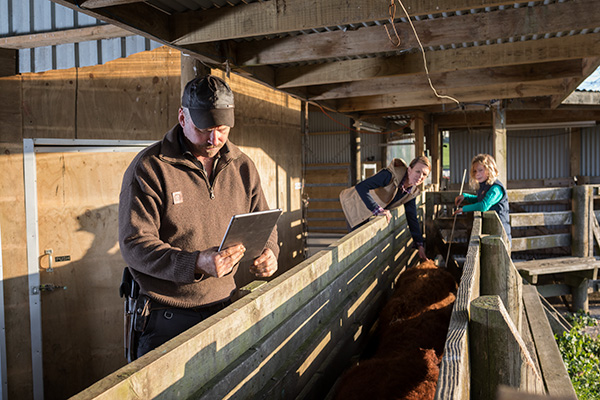Connectivity issues are stopping many farmers from adopting technology to use on the farm.
The adoption of Internet of Things (IoT) in world agriculture is being hampered by unreliable connectivity, according to a recently published report.
The “Industrial IoT in the time of Covid-19” report says 72% of agricultural organisations globally experience connectivity challenges when trialling IoT projects and 70% don’t feel that public or terrestrial networks are completely suitable for their IoT needs.
The research was carried out by Inmarsat, a multi-national satellite business, which previously reported a rapid increase in the adoption of IoT, with 80% of respondents to a 2021 survey saying they had employed an IoT device compared with only 26% three years earlier.
IoT’s been quietly spreading through New Zealand agriculture for years, one of the earliest adoptions being auto-steer tractors and now there are thousands of weather stations, soil moisture probes, animal tracking and robotic systems and the like beaming out data.
But Inmarsat director of Market Development Steven Tompkins says the latest findings reveal struggling to find the right kind of connectivity is a key barrier to successful agricultural IoT adoption. He suggests satellite services such as Inmarsat could solve that problem.
“Satellite is increasingly enabling farmers to adopt automated infrastructure, including water pumps, gates and grain storage temperature control, as well as the latest precision farming technologies, where consistent and reliable connectivity is fundamental,” Tompkins says.
And with hundreds of satellites being launched every year – Starlink alone now has 1500 orbiting Earth and plans to increase that to 42,000 – the reliable connectivity Tompkins aspires to, is becoming ever more accessible.
Though the new report doesn’t include any information specifically about NZ, connectivity is an issue for IoT developers here too. But satellites aren’t the only solution, Wireless Internet Service Providers Association (WISPA) chairperson Mike Smith says.
He believes the connectivity needed for IoT in NZ could be provided by a ground-based network.
His organisation represents 37 independently operated networks that provide wireless broadband in areas not covered by the big telcos and he says that coverage could be harnessed to provide connectivity for IoT devices too.
A new company WISPA Networks has been formed with the intention of adding long-range wide area network (LoRaWAN) services over the whole country.
“What we see as the future is we have a network of networks, 37 networks throughout the country who have coverage that covers more areas that mobile operators don’t get to where there is nothing else. The intent is an IoT broadband network that’s available throughout New Zealand,” Smith says.
He says WISPA has a rural focus and members have networks throughout NZ.
“Our coverage is humungous and we have local relationships and work nationally. Every one of our businesses has relationships with farmers. We’re building new infrastructure throughout New Zealand and an IoT network based on LoRaWAN long-range wide area networks that allows us to connect anyone,” he says.
“The intent is an IoT broadband network that’s available throughout New Zealand.
“WISPA’s already in 75,000 rural homes and businesses so we have a massive footprint and we want to take that to the next step.”










